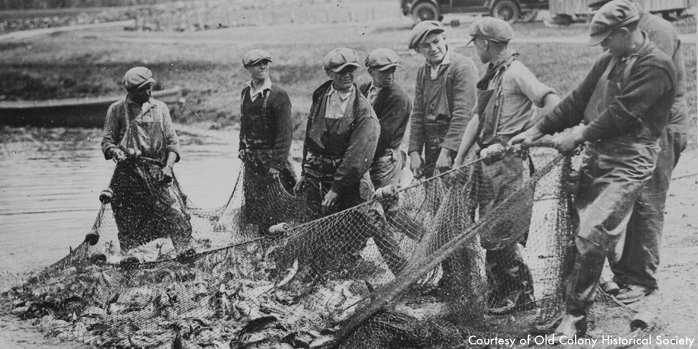Restore Function to our Ecosystems
Our work to restore rivers includes assessing culverts and restoring natural flow, protecting wetlands, removing dams and building fish ladders. There are many human influences that damage the natural functions of rivers, raise water temperatures and add to the pollution load.

Save The Bay partners with federal, state, and local groups on several river restoration projects that include dam removal. Removal of a dam is one of the best tools for river restoration. While fish ladders provide select species with passage over a dam, removal of the dam restores natural river functions for all species. Rivers quickly return to their former channel and habitat function when a dam is removed. Within one growing season, the banks are re-vegetated and river species have returned to the former impoundment.
Why Remove a Dam?
River restoration can benefit a community by increased recreational and habitat potential, restoration of high quality fisheries and the return of wildlife. If given enough time, water will find its way through a dam’s structure and it will deteriorate and fail. Many of the state’s dams that have stood for centuries are now safety hazards. Repairing dams typically costs three to five times the one-time cost of removal.
Many private owners and municipalities no longer want the burden of increased maintenance costs and liability associated with keeping a dam.
Discussions within the community are essential to a positive outcome from a dam removal decision. Mill ponds and other impoundments stand as an important reminder of our early colonial history, and provide a strong sense of place and identity to the community. There are also strong aesthetic and nostalgic attachments to dams.
Dam removal is not right for all locations or all communities, but these issues can be used to foster dialogue about the preservation of our history and local identity, and the restoration of water quality, fisheries and river habitat.
Benefits of Dam Removal
- Improves fish passage and movement (for migratory fish, eliminates the need for and cost of fishway operation and maintenance)
- Restores natural water temperatures and oxygen levels
- More paddling and less portaging for canoes and other watercraft
- Improves sediment transport, including beach nourishment in coastal areas
- Reduces liability concerns for dam owners, and, depending on the dam site, eliminates public safety hazards
Dam Removal Resources
- Dam Removal FAQs
- Dam Safety and Dam Removal in Rhode Island (White Paper)
- Fish Run Fact Sheet





